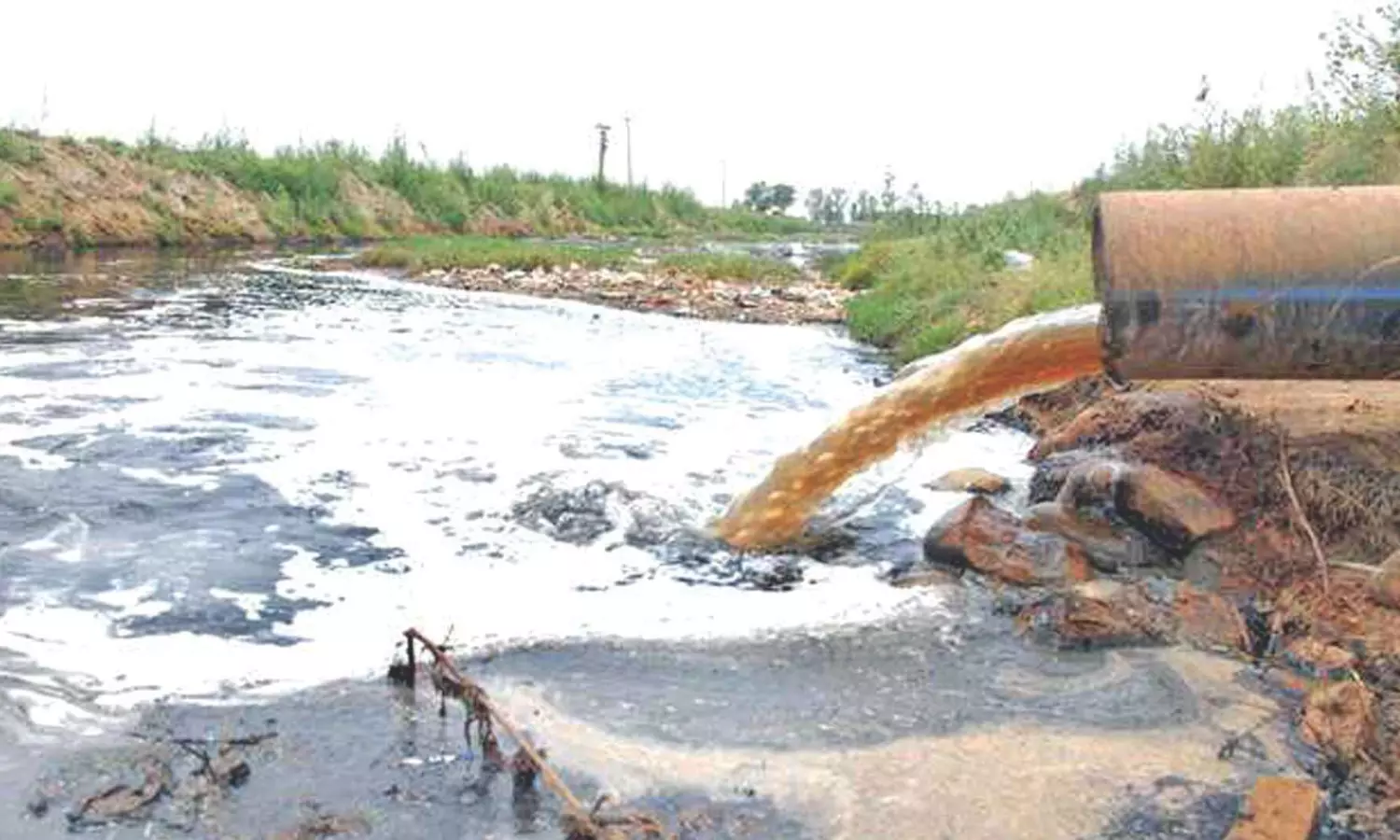Palar River basin severely hit by heavy metal contamination, finds report
A research paper published in the Elsevier Group of Journals has revealed severe heavy metal contamination in the Palar River basin, which is spread all across Vellore district, reports CS Kotteswaran;

Palar river basin
CHENNAI: Palar river basin, once considered the lifeline of north Arcot district covering Vellore, Tiruvannamalai, Ranipet and parts of Kancheepuram, is now becoming a highly contaminated zone.
A detailed geochemical investigation of physicochemical properties and heavy metal contamination was conducted on 140 groundwater samples in Vellore and Ranipet districts around the Palar River to assess the metal-index risk in groundwater. Suffice to say the results were shocking.
A research paper published in Elsevier Group of Journals titled ‘Ecological Indicators’ has revealed severe water contamination in Palar River basin, which is spread all across Vellore district.
“Cadmium, zinc, and manganese are some of the heavy metals found in alarming levels in the river. The water quality is significantly contaminated with chromium, carbon monoxide, copper, cadmium, and iron, and moderately contaminated with manganese, nickel, and zinc,” read the research journal authored by A Kumaraguru, Biodiversity Conservation Foundation, Tiruchy.
The study was taken after the recent admission of State Health Minister Ma Subramanian about the high incidence of cancer among residents of Vellore and Ranipet regions. That’s why this region was selected to study the carcinogens and heavy metals in the water table.
This level of contamination is associated with various health problems, including mental illness, stomach and skin cancer, liver failure, and kidney damage. Based on contour maps created with GIS, most of the region is heavily contaminated with heavy metals, rendering the groundwater unfit for human consumption.
The Health Risk Assessment Index (HRAI) rose to 9,028.6, indicating an extremely high risk. In addition to identifying the extent of contamination, the study also proposes sustainable solutions to mitigate these risks, read the journal.
Commenting on the solutions for the issue, co-author Sai Saraswathi, School of Advanced Sciences, Vellore Institute of Technology, said, “There is a need for adoption of advanced water treatment technologies, promotion of green chemistry practices in local industries, establishment of stricter regulatory frameworks, and implementation of community-based water management strategies,” said Professor Sai.
These measures are essential to ensuring safe drinking water and achieving sustainable development goals. The findings underscore the urgent need for comprehensive monitoring and proactive remediation strategies in industrially contaminated regions.
Heavy metals such as copper (Cu), chromium (Cr), cobalt (Co), cadmium(Cd), iron (Fe), nickel (Ni), zinc (Zn), and manganese (Mn) were found in the water in the Palar River basin. “Various metal indices, such as the Heavy Metal Index, Geoaccumulation Index, Contamination Factor, and Health Risk Assessment Index (HRAI), were computed to understand the level of contamination and health risks to humans upon the short/long-term utilisation of groundwater,” added the professor.
The groundwater samples were collected using a random sampling technique throughout the basin of Palar. “Approximately 140 sampling sites were selected, covering a 61 km stretch to the north and 38 km to the south of the river, to ensure comprehensive representation of all potential contamination sources throughout the study area,” said Sakshi Dange, research scholar, VIT.
The sampling locations were chosen based on a detailed analysis of geographic, hydrogeological, and demographic factors. Sites were evenly distributed to cover diverse land uses, including residential, industrial, and agricultural zones, to capture the spatial variability of groundwater quality.
Additionally, the selection process incorporated historical data and previous studies to identify contamination hotspots and areas of concern. “This approach ensures that the collected samples provide a complete picture of the groundwater quality. These samples were collected from various sources, such as open wells and bore wells,” Dange added.
The cobalt contamination along the riverside is primarily attributed to the government and public sector undertakings in SIPCOT, located on the east side, which contributes to contamination flowing through the river.
The consumption of contaminated water can result in numerous health problems for humans. “Long-term exposure to cobalt is associated with several health issues, including skin allergies, dermatitis, asthma, and pneumonia, whether it occurs through ingestion, inhalation, or skin contact,” observed the authors in their recent journal.

